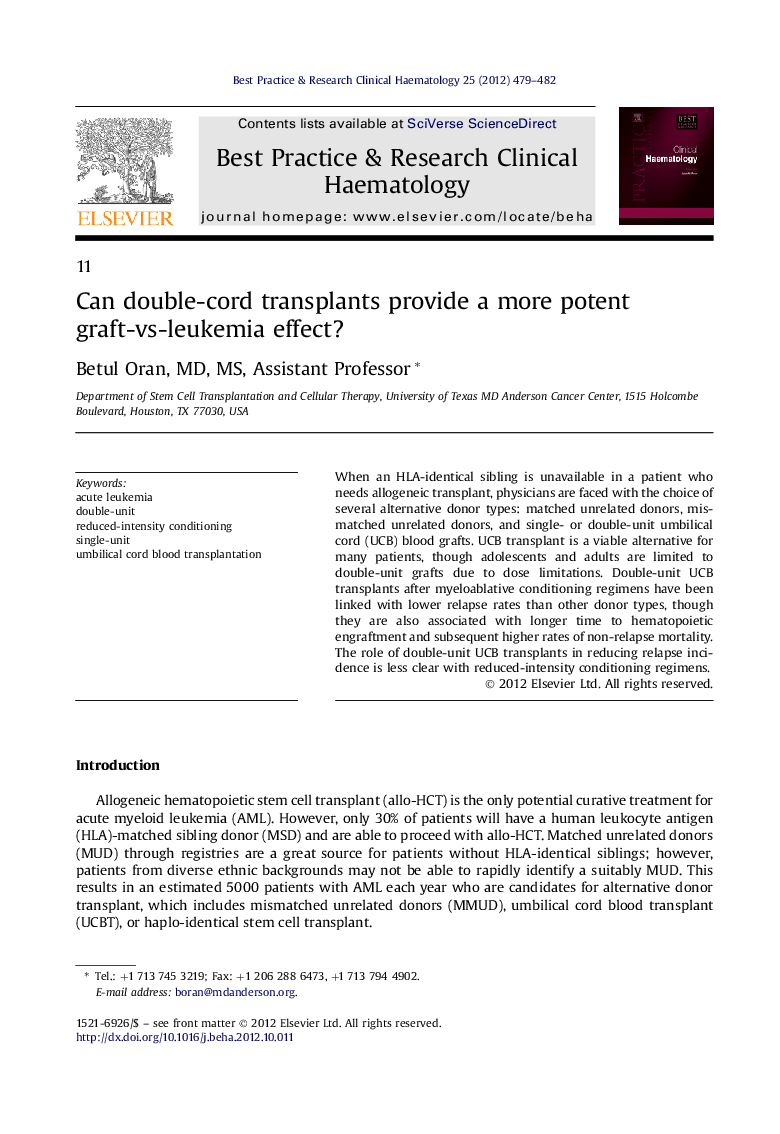| Article ID | Journal | Published Year | Pages | File Type |
|---|---|---|---|---|
| 2100196 | Best Practice & Research Clinical Haematology | 2012 | 4 Pages |
When an HLA-identical sibling is unavailable in a patient who needs allogeneic transplant, physicians are faced with the choice of several alternative donor types: matched unrelated donors, mismatched unrelated donors, and single- or double-unit umbilical cord (UCB) blood grafts. UCB transplant is a viable alternative for many patients, though adolescents and adults are limited to double-unit grafts due to dose limitations. Double-unit UCB transplants after myeloablative conditioning regimens have been linked with lower relapse rates than other donor types, though they are also associated with longer time to hematopoietic engraftment and subsequent higher rates of non-relapse mortality. The role of double-unit UCB transplants in reducing relapse incidence is less clear with reduced-intensity conditioning regimens.
